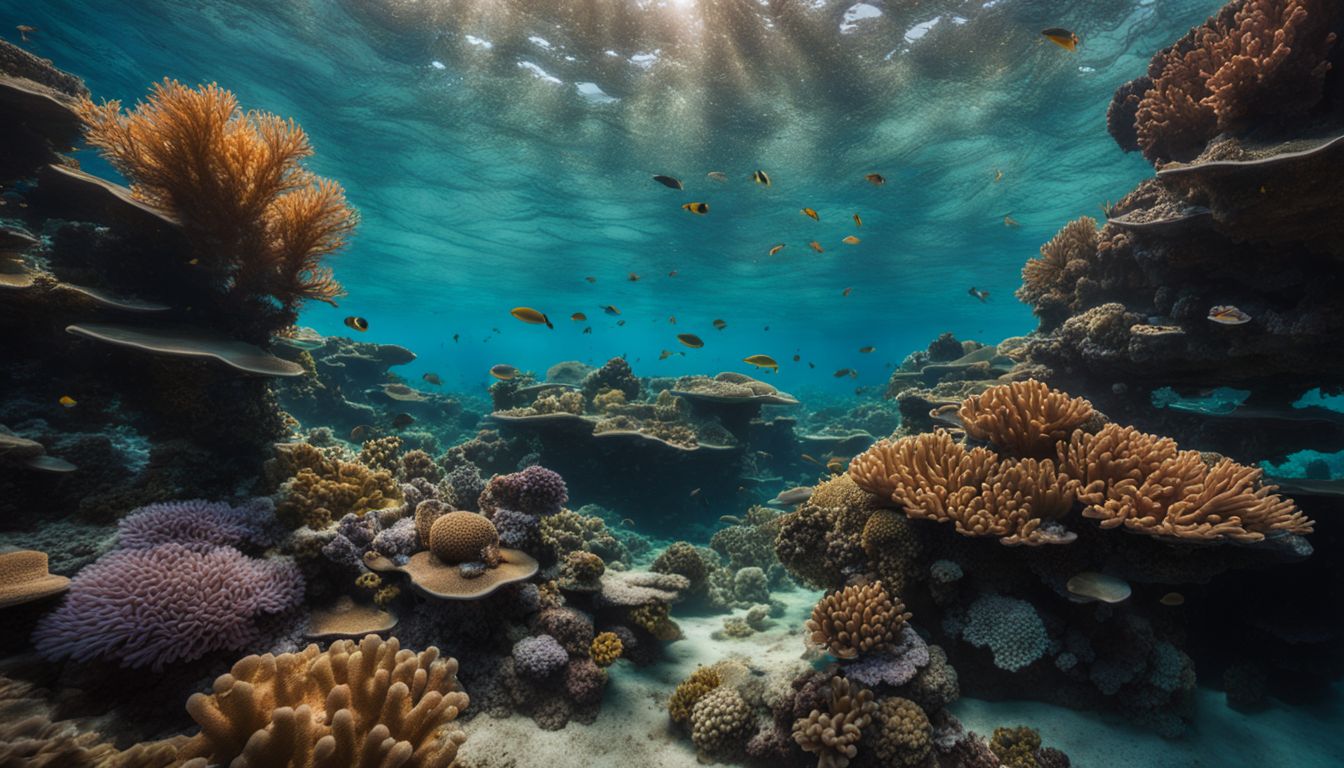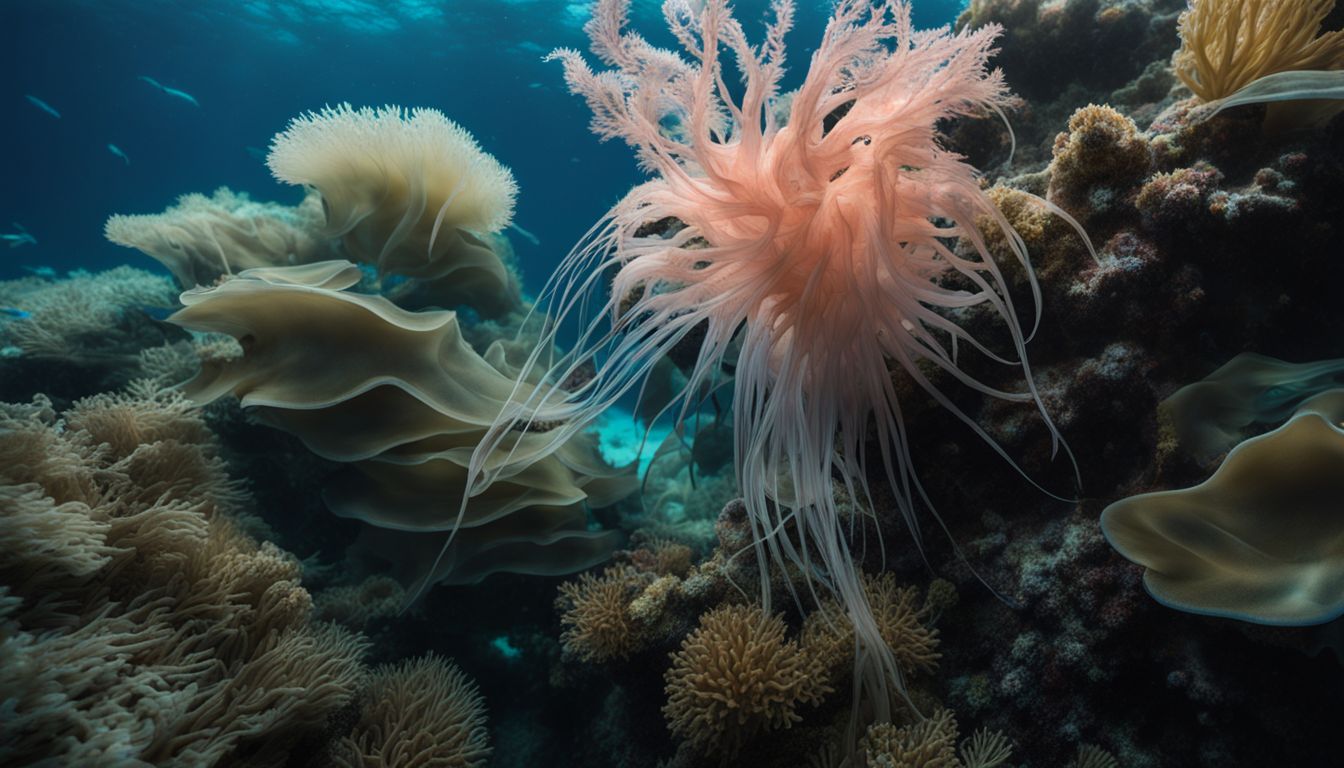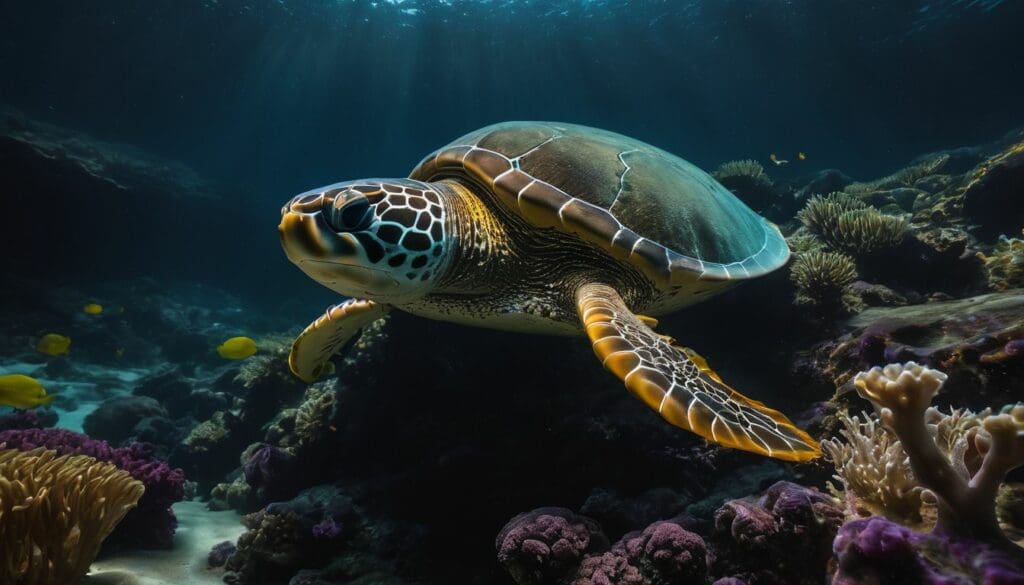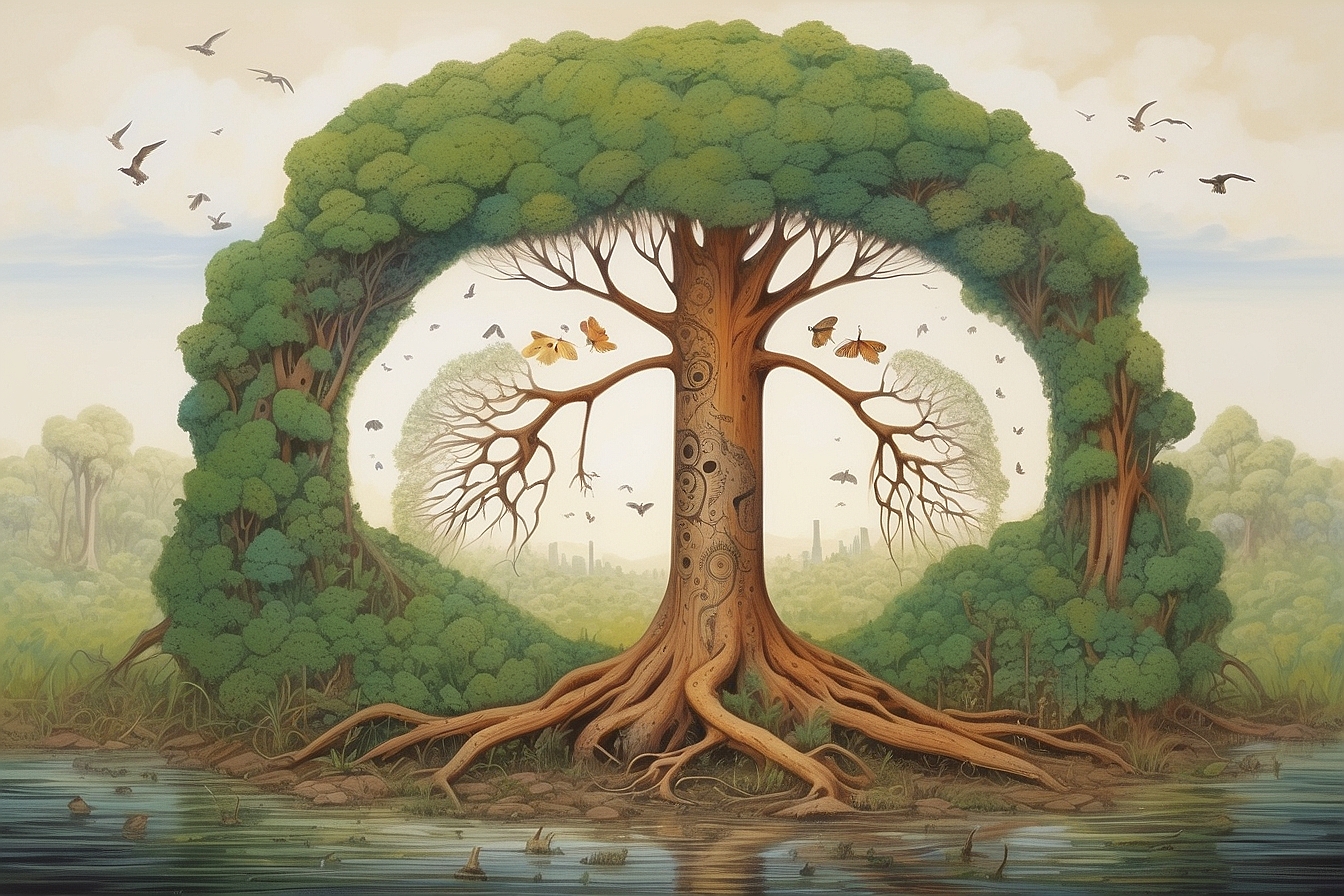Like so many of us, there’s a certain allure to the enigmatic mysteries that dwell beneath the undulating waves of our oceans. It’s this very pull towards the unfathomable depths that has sparked an insatiable curiosity within us.
With hands-on research and a splash of excitement, we’ve discovered that a staggering 80% of our watery realms remain untouched and brimming with life yet to be documented. In this feature, we’re poised to draw back the curtain on some of Mother Nature’s most hidden marvels tucked away in the deep blue.
So grab your virtual snorkel as we embark on an enlightening excursion into the inky heart of our oceans – it promises to be quite a stirring adventure!
Key Takeaways
- The National Oceanic and Atmospheric Administration (NOAA) has spent over 20 years documenting new marine life forms and mapping the ocean floor using ROVs, revealing how much of our ocean remains a mystery.
- Remarkable species have been discovered in deep-sea expeditions, including a new genus of comb jelly found by the Okeanos Explorer and an alien-like sponge documented by scientists aboard vessels like ALVIN.
- Deep – sea organisms hold potential for medical breakthroughs, with researchers studying unique chemicals they produce for developing treatments against diseases like cancer and creating new antibiotics.
- Recent explorations in the Pacific Ocean’s deep seas have uncovered new species amidst mining projects, showing the importance of balancing industrial activities with conservation efforts to protect these ecosystems.
- Continuous deep – ocean exploration is vital not only for scientific discovery but also for informing effective conservation strategies that ensure the health and balance of global ocean ecosystems.
Celebrating Discoveries: 20 Years of NOAA Ocean Exploration

Diving into the deep, we’ve witnessed a myriad of breakthroughs thanks to NOAA’s dedicated ocean exploration. The National Oceanic and Atmospheric Administration (NOAA) has spent two decades uncovering secrets from the deepest corners of our oceans.
With advanced technology like remotely operated vehicles (ROVs), researchers have mapped vast expanses of the unknown sea floor and brought to light extraordinary forms of marine life that thrive in extreme underwater environments.
These expeditions led by NOAA take us through spectacular hydrothermal vents, towering underwater mountains, and sprawling coral reefs. Each journey reveals critical insights about our planet’s largest ecosystem — the deep ocean.
Sophisticated tools such as submersibles and remote-operated vehicle systems empower scientists to observe and document these hidden worlds in unprecedented detail. Efforts to understand Earth’s oceans better have unearthed a treasure trove of data crucial for conservation efforts, making each discovery a cause for celebration in preserving our marine environment.
Revealing Biological Marvels: Deep-Sea Species

In our journey to the depths, we’ve uncovered biological wonders far beyond imagination, where creatures thrive in extreme conditions. The deep-sea is home to a plethora of species that challenge our understanding of life on Earth.
New Genus and Species of Comb Jelly
We’ve encountered a remarkable breakthrough in our deep-sea exploration efforts. Scientists aboard the Okeanos Explorer have discovered a new genus and species of comb jelly, dazzling us with its unique biological characteristics.
These gelatinous creatures float through the ocean depths, their bodies pulsing gently with bioluminescent light. This significant find highlights how much mystery still lurks in the marine environments we are so passionate about protecting.
Exploring the vast expanses of our Earth’s oceans brings these incredible deep-sea animals into focus for marine biologists and conservationists alike. The discovery underscores the urgent need to study and preserve our oceanic biosphere, which is brimming with biodiversity far beyond what meets the surface eye.
Every creature we uncover plays a critical role in maintaining delicate ecosystem services – even those as ethereal as this newfound comb jelly, whose very existence can teach us more about life on this blue planet we call home.
Alien-Like Sponge Discovery
Moving from the mesmerising comb jellies, our journey through the ocean’s wonders takes us to another extraordinary find—a sponge that seems straight out of a sci-fi film. Scientists aboard research vessels such as the ALVIN and those working with institutions like Woods Hole have hauled up these sponges from the deep sea, revealing forms unlike anything seen before.
These bizarre creatures defy conventional ideas about marine animals. They boast structures so complex and otherworldly that even seasoned marine biologists are left in awe. Their discovery not only adds to our catalogue of deep-sea corals but also sheds light on how life can thrive in extreme environments on Earth’s oceans—insights that could inform astrobiologists studying potential alien life.
These explorations underscore the endless surprises hidden beneath our ocean waves, reminding us of how much remains undiscovered on our own planet.
Newly Named Sea Star
From the abyss where alien-like sponges reside, we turn our attention to a sparkling newcomer on the ocean floor. Divers met face-to-face with this extraordinary sea star during an expedition led by marine biologists in the Pacific Ocean’s deep waters.
Its vibrant colours and unique structure set it apart from previously known species.
We marvel at the intricate patterns that adorn its body—an underwater tapestry of nature’s artistry. This celebration of life beneath the waves reminds us how each discovery enriches our understanding of marine ecosystems.
By giving it a name, we take another step towards unraveling the mysteries held within Earth’s oceans, recognising our role in safeguarding these wonders for generations to come.
Deep-Sea Discoveries Impacting Global Health
We’ve unearthed incredible organisms in the ocean’s depths that could revolutionise medicine. These deep-sea creatures produce unique chemicals to survive extreme conditions, and researchers are studying them for potential medical treatments.
Imagine drugs developed from marine molecules that fight cancer or antibiotics derived from sea-dwelling bacteria which combat resistant superbugs. Our dives into the abyss aren’t just quests of curiosity; they hold keys to unlocking new therapies and enhancing global health.
Our exploration efforts also expose us to substances with powerful anti-inflammatory properties found in some deep-sea sponges. This could lead to breakthroughs in treating diseases like arthritis, where inflammation is a major problem.
Moreover, enzymes sourced from organisms living near hydrothermal vents might improve industrial processes by working under pressures and temperatures impossible for their land-based counterparts.
By harnessing these natural innovations, we aim not only to safeguard our oceans but also pave the way for life-altering medical advancements.
Uncovering New Species: Pacific Deep-Sea Mining Hotspot
As we peer into the depths of the Pacific Ocean, remarkable discoveries await us. The quest for precious minerals has led to a surge in deep-sea mining projects within this region.
Yet, amid these ventures, something extraordinary is happening: new species are coming to light, hidden in the darkness miles beneath the waves.
Explorers use remotely operated vehicles (ROVs) to navigate these uncharted territories where sunlight never reaches. Each dive can reveal creatures that challenge our understanding of life’s resilience.
Scientists from institutions like Schmidt Ocean Institute and Monterey Bay Aquarium Research Institute are at the forefront of this exploration. They document bizarre forms of marine life that thrive around methane seeps and hydrothermal vent fields—a stark contrast against the backdrop of sustainable use debates surrounding seabed mining.
Our ocean science endeavours not only uncover unknown biodiversity but also bring critical insights into how human impacts including climate change might affect these fragile ecosystems nestled in ocean bottoms teeming with undiscovered wonders.
Fascinating Findings: Deep Sea Discoveries of Recent Year
We’ve witnessed a treasure trove of discoveries in the deep sea over the past year. These findings give us new insights into life in the darkest depths.
- Scientists uncovered a peculiar species of comb jelly using remotely operated vehicles (ROVs). This transparent creature has rows of cilia that shimmer with rainbow colours, revealing how diverse marine biology can be.
- Researchers identified an alien – like sponge on an underwater volcano near the Marshall Islands. Its unique structure challenges previously held views about sponge development.
- A new type of sea star emerged from the abyssal plains, showcasing a vibrant colour pattern unlike any found in shallower waters. Its discovery adds to our understanding of biodiversity loss and ecosystem health.
- Deep – sea vents, teeming with specialised organisms, were explored further. Unique bacteria that thrive in extreme heat could revolutionise our approach to green energy sources.
- Environmental DNA analysis revealed dozens of unknown species around hydrothermal venting sites. These methods enable us to detect life forms without disturbing their natural habitats, essential for conservation efforts.
- The Red Sea yielded its secrets with aquatic scholars documenting extraordinary carbon storage processes practised by local sea mammals and snailfish, vital for combating acidification.
- A groundbreaking study used Acoustic Doppler Current Profilers (ADCP) to track deep current movements. This has implications for understanding climate change and its impact on marine life migration patterns.
- Victor Vescovo piloted his deep-submergence vehicle (DSV) Limiting Factor to record-breaking depths. His journeys brought back stunning footage and invaluable data from uncharted territories beneath the waves.
The Necessity for Exploration: Understanding Ocean Ecosystems
Continuing from the tapestry of fascinating findings, it’s clear that deep sea exploration serves a greater purpose beyond mere curiosity. Our planet’s health hinges on the vitality of its oceans and their ecosystems.
As we navigate through uncharted waters using remotely operated vehicles (ROVs) and advanced technologies, each expedition grants us invaluable insights into these mysterious realms.
Delving into depths untouched by sunlight, we unravel layers of biological diversity that are critical to understanding Earth’s complex life systems.
Venturing beneath the waves is imperative not just for discovery but also for protection. By familiarising ourselves with creatures like the magnapinna squid or studying ancient Greenland sharks, we begin to perceive how every organism plays a role in maintaining oceanic balance.
Such explorations empower us to advocate for conservation strategies informed by science and wonder alike – ensuring maritime treasures remain part of our world’s enduring narrative.
Conclusion
As we plunge into the depths, our knowledge broadens. The deep sea holds secrets that could reshape our understanding of life itself. Every dive brings us closer to grasping the vast complexities of our oceans’ ecosystems.
Let’s press on, as each discovery fuels our quest for learning and protecting these uncharted waters. Together, we embark on a journey of endless intrigue beneath the waves.
FAQs
1. What are some key deep-sea discoveries in oceanic biodiversity?
Recent key deep-sea discoveries include the sighting of rare creatures like Architeuthis dux, Greenland sharks and even relics from ancient megalodons.
2. Who are some notable explorers and scientists involved in oceanic exploration?
Notable figures in oceanic exploration include marine biologists Jane Lubchenco and Fabien Cousteau, along with pioneers like Robert Ballard and Marie Tharp who have significantly contributed to our understanding of the deep sea.
3. How do researchers explore the deepest parts of the ocean?
Researchers dive into the hadal zone, the deepest part of the ocean, using specialised equipment such as Remotely Operated Vehicles (ROV) and research vessels like JOIDES Resolution.
4. Why is it important to study plate tectonics in relation to deep-sea exploration?
Studying plate tectonics helps scientists understand how seafloor features form whilst exploring relationships between geological activity and deep-sea biodiversity.
5. Are there any concerns regarding activities like seafloor mining at great depths?
Yes, there are concerns that activities such as those regulated by the International Seabed Authority could impact delicate ecosystems; conservationists advocate for protecting these biodiverse habitats against potential damage from seafloor mining.





